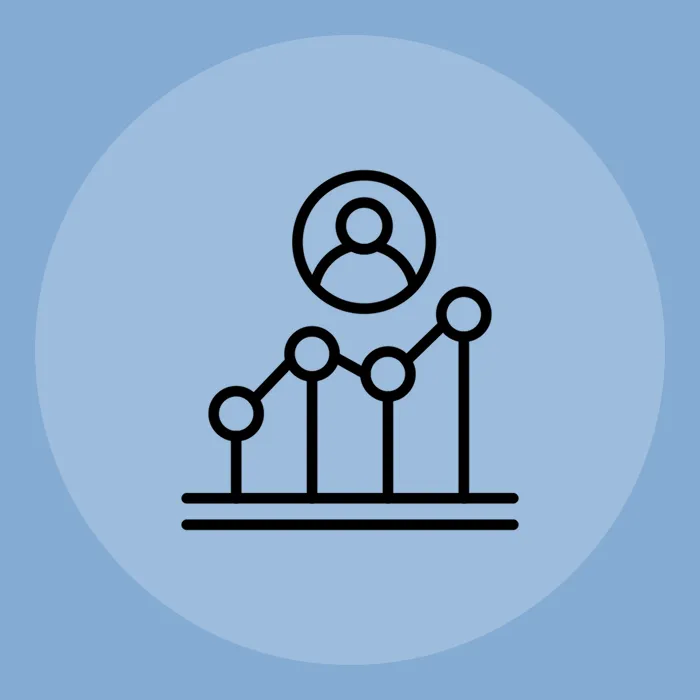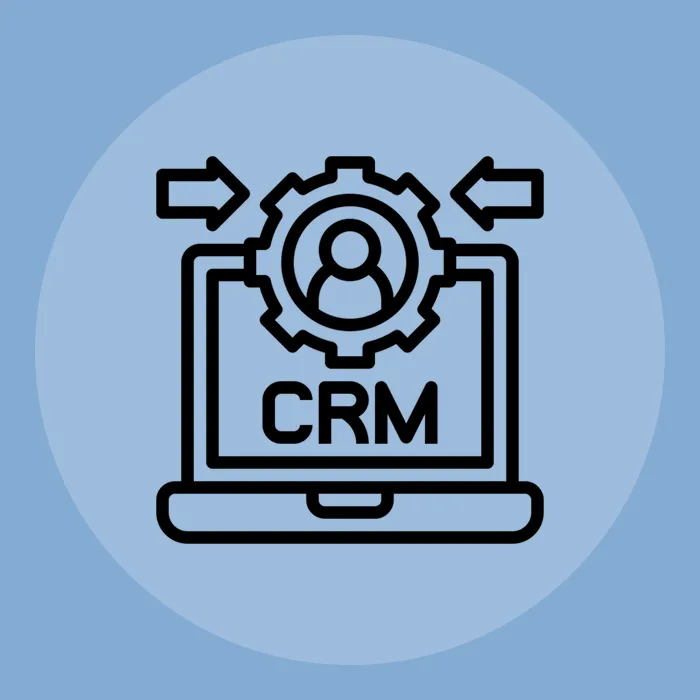Let's begin with an alternative approach. Most B2B businesses don't really have a problem generating leads. Any content you publish, every business event you attend, and every campaign you run will eventually generate leads. Confused?
The real problem is finding enough qualifying leads to justify the time, resources, and effort you are putting into them. Now, even if you have surplus capital, such an inefficient strategy for landing quality leads isn't good business.
If you want the most bang for your buck, what you need to focus on is lead generation metrics. They indicate which leads are not worth the time, which are worth nurturing, and which are the real deal.
This blog will tell you everything you need to know about lead generation metrics, what they are, and how they help. Get insights into which ones your marketing teams should be focusing on for 2025, along with suggestions on which tools will help gain the best insights from them.
Why Tracking Lead Generation Metrics Matters?
The answer to why lead generation performance metrics matter will reveal itself when you look at a few facts and numbers.
As per recent data, the average cost per lead across all industries is $198.44. Now, if you are converting 50% of all the leads you generate, you are still hemorrhaging a lot of effort and capital.
When your marketing and sales teams work off the same relevant data sets, they can complement each other's efforts to convert leads quickly. Without it, it's back to the usual: arguments over who’s responsible for low-quality lead.
Finally, it's the results that this exercise offers. According to a recent survey by Statista, about 95% of marketers said data-driven methods worked for them. That means tracking lead generation KPIs is a sure-shot way to get ahead of the competition.
Top 10 Lead Generation Metrics You Should Be Tracking in 2025
In 2025, generating leads is no longer just about volume. It’s about quality, efficiency, and impact. Here are the 10 metrics that you must consider:
1. Cost Per Lead (CPL)
CPL is exactly what it reads: what you have spent to acquire one lead and how efficiently your money is working for you.
| Formula- CPL = Total campaign spend ÷ Total number of leads generated |
The lower the value, the better. That said, even if you are cash-strapped, do not optimize your campaign solely to bring down this figure; you will most likely end up with low-quality leads. As long as you are landing quality leads, a higher CPL is acceptable, as the Customer Lifetime Value (CLV) will offset this.
2. Lead Conversion Rate (LCR)
The LCR tells you how successfully you can convince a lead to take the desired action. For example, take them one step further into your sales funnel.
| Formula- LCR = (Leads converted ÷ Total number of leads) × 100 |
Your LCR will tell you if your targeting is off or if the funnel’s leaking. If you further refine the formula to "(Leads converted to the next funnel stage ÷ Total leads) × 100," it will help you pinpoint where customers are losing interest in your sales funnel and where you need to put in additional efforts to nurture them.
3. Marketing Qualified Leads (MQLs)
MQLs are leads that have shown interest in your business and are worthy of passing on to the sales team to pursue. Tracking this metric tells you if your outreach is generating interest and hence triggering engagement.
There is no set formula to calculate MQLs, as each business has varying criteria to determine who qualifies as an MQL. You can, however, set up a lead scoring system and set a points threshold to determine who qualifies as an MQL.
4. Sales Qualified Leads (SQLs)
SQLs are MQLs that a sales team has vetted and agreed are worth pursuing. A healthy flow of SQLs shows your content, targeting, and market timing are in sync and working as planned.
On the contrary, a low SQL flow can indicate either one of two scenarios: your marketing is not generating leads that are truly interested in what your offering or the nurturing process needs attention.
5. Lead-to-Customer Rate
The lead-to-customer rate determines how effective your entire lead generation process is. This lead generation metric measures how many leads you have successfully converted to paying customers.
| Formula- Lead-to-Customer Rate = (Leads converted to paying customers ÷ Total number of leads) × 100%. |
This metric gives you a holistic reality check of your funnel. A low value indicates that your marketing and sales teams are spending a significant amount of time and resources chasing low-quality leads.
6. Time to Conversion
The time-to-conversion metric tells you how long your sales cycles actually are. Now, granted, B2B sales cycles are generally long and complex, but if, say, each deal is taking on average 90+ days to close while your competitors are getting it done in 75 days, this metric will force you to ask, why?
| Formula- Time to Conversion = Total days from lead creation to closed deal ÷ Number of deals |
If your sales cycles are short, it's indicative of an efficient sales process; if they run too long, you risk lead decay.
7. Return on Ad Spend (ROAS)
This metric is self-explanatory; it tells you how much revenue you have earned for the amount you have put into your outreach efforts.
| Formula- ROAS = Revenue generated from campaign ÷ Campaign cost |
If ROAS is below 1, you're losing money. If it's above 3, you're in strong territory. Tracking this metric will tell you which of your marketing campaigns are going strong and deserve an increased budget and which are just not working in your favour.
8. Click-Through Rate (CTR)
CTR is a metric that tells if you are able to grab attention and get your audience to act on it. The logic behind this metric is simple: if people seeing your content (your impressions) are not engaging with your content (you aren't landing clicks), there is something wrong.
| Formula- CTR = (Clicks ÷ Impressions) × 100 |
A low CTR doesn't just mean your campaigns are underperforming; it means that all the time, effort, and money you are sinking into your outreach efforts are being ignored altogether.
9. Form Conversion Rate
A conversion rate helps you gauge how many clicks translate to people signing up. It gives an idea if there is something in your user experience that is preventing, or not doing enough, to encourage your website visitors to take that next step.
| Formula- Form Conversion Rate = (Total Form Conversions / Total Visitors) × 100 |
This lead generation metric is a constant reminder that it's not website traffic that matters, but how many leads you can generate from it.
10. Lead Source Performance
Lead source performance is a metric that tells you which channels (e.g., LinkedIn, paid search, organic traffic, referrals) deliver you the most high-quality leads. It also helps you compare ROI across platforms.
| Formula- Performance = Revenue or conversions attributed to each source ÷ Cost or effort per source |
How to Assess Lead Quality?
As touched upon earlier, quality matters more than quantity. Here are three ways to determine if a lead is worth pursuing or not.
1. Lead Scoring
Building a lead scoring model is the first step in accessing a quality lead. You assign points to each lead you gather based on explicit parameters (sector, size of the company, job role) and implicit parameters (actions the lead has taken, like a website visit, form submissions, or frequency of interaction).
2. Engagement Indicators
Tracking a potential lead's engagement is another method to assess their quality: you want signals that show intent, not just curiosity. Any actions, such as downloading a whitepaper, opening emails, or attending webinars, indicate that they are possibly moving toward a decision.
3. Fit Score Based on ICP
The final step is to filter out all the leads that do not match your Ideal Customer Profile. Even if a lead ticks all the boxes in your lead scoring model and in terms of engagement indicators, they do not match the industry you are targeting or are not a decision maker, should you really ask your sales teams to engage with them?
Tools to Track and Analyze Lead Generation Metrics
You know which metrics to track and how to judge lead quality; the next question is obviously, how to do this efficiently? Here are the tools that help:
- Google Analytics 4 (GA4)- It tracks user behavior across your website, critical data to help you qualify your leads.
- HubSpot and Salesforce- Ideal for setting up your lead scoring models, segmenting MQLs and SQLs, and automating your workflows.
- LinkedIn Campaign Manager- A boon for B2B marketers using LinkedIn Ads. It helps evaluate lead source performance, your CPLs, CTRs, and ROAS from this key B2B channel.
- SEMrush and Ahrefs- These give you insights into how your organic search traffic contributes to leads. You need this to identify your top-performing content and sources.
- Dreamdata and HockeyStack- These attribution tools connect anonymous website visits to revenue. In turn, they allow you to evaluate and refine lead generation performance metrics at the campaign level.
Summing It Up
Lead generation KPIs shouldn't be chalked up to mere performance markers; you should be making all your decisions based on them. If you want your B2B enterprise to grow at a steady pace without bleeding money, it's these metrics that will tell you where your sales pipeline is working, where it’s stalling, and where you need to divert your resources to–and that's all there is to it.
FAQs
What are the most important lead generation KPIs for B2B?
The most important lead generation KPIs for B2B are CPL, MQLs, SQLs, and lead-to-customer rate. These will tell you how efficiently you’re generating interest, qualifying it, and converting it into revenue.
How often should you review lead gen metrics?
If you have active campaigns, you should review your B2B lead generation KPIs weekly. As good practice, do a once-a-month review to audit your strategy as a whole.
What tools are best for tracking lead gen metrics?
The best tools for tracking lead generation metrics are: GA4 (track behavior), HubSpot or Salesforce (lead scoring), and Dreamdata or LinkedIn Campaign Manager (attribution and channel insights).
How can I benchmark lead generation performance?
There are two ways to do this: one is against your own performance in past quarters, and the second is against your competition or industry averages.










